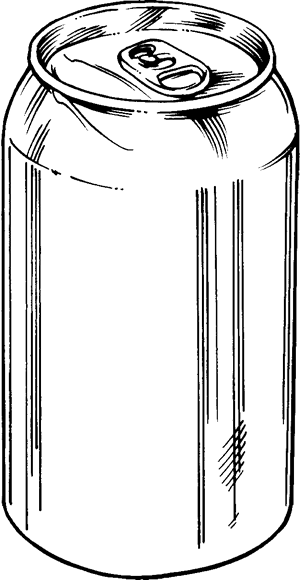Understanding Prime: Is It a True Sports Drink and How to Use It for Hydration
Introduction: What Is Prime?
Prime has become a household name in the world of hydration beverages, gaining immense popularity after its launch by high-profile creators. But with so many bold marketing claims and trendy packaging, many consumers wonder: is Prime truly a sports drink, and is it the right choice for hydration during physical activity? In this article, we provide a comprehensive analysis of Prime’s formulation, its role as a sports drink, and practical guidance on how to incorporate it into your fitness or daily hydration routine. We’ll also compare its benefits and limitations to traditional sports drinks, ensuring you make an informed decision.
What Is Prime: Sports Drink or Not?
Prime, as marketed by its creators, is classified as a hydration drink designed to help replenish fluids and electrolytes lost during exercise. The product line includes both Prime Hydration (marketed as a sports drink) and Prime Energy (an energy drink variant with caffeine) [1] . For the purposes of hydration during sports or physical activity, Prime Hydration is the relevant product.
Prime Hydration is formulated with:

Source: goodto.com
- 10% coconut water
- Electrolytes (magnesium, potassium, sodium)
- B vitamins and BCAAs (branched-chain amino acids)
- No caffeine
- No added sugar (sweetened with acesulfame potassium and sucralose)
- Approximately 20-25 calories per bottle
These ingredients are typical of modern sports drinks, which aim to replace fluids and electrolytes lost through sweat during exercise [1] [2] .
Sports Drink Definition and Prime’s Fit
A sports drink is a beverage formulated to help athletes and active individuals rehydrate, replenish electrolytes, and sometimes provide carbohydrates for energy [4] . Prime Hydration meets much of this definition:
- It provides electrolytes (notably potassium and magnesium)
- Contains coconut water , a natural source of potassium
- Is low in sugar and calories compared to traditional sports drinks
However, unlike classic sports drinks (such as Gatorade or Powerade), Prime is very low in sugar and carbohydrates, making it less ideal for endurance athletes who may require rapid energy replenishment during long-duration exercise. Instead, Prime is marketed toward general hydration and recovery, rather than intensive athletic performance [4] .
Ingredients and Nutritional Breakdown
Examining the ingredients and nutrition facts of Prime Hydration reveals its intended function:
- Electrolytes: Each bottle contains approximately 125 mg magnesium and 700 mg potassium, both of which are essential for nerve and muscle function during exercise [2] .
- Coconut Water: Offers natural hydration properties and a source of potassium.
- B Vitamins and BCAAs: Support energy metabolism and muscle recovery, though the exact impact of BCAAs in drink form is still debated in sports nutrition.
- No Added Sugar: Sucralose and acesulfame potassium are used as sweeteners, resulting in a low-calorie profile.
- No Caffeine in Hydration Versions: Unlike Prime Energy, Prime Hydration is caffeine-free, making it suitable for children and caffeine-sensitive individuals [3] .
These features align Prime Hydration with modern, health-conscious hydration beverages, but set it apart from older, sugar-laden sports drinks.
How Prime Compares to Traditional Sports Drinks
When comparing Prime Hydration to legacy sports drinks, several key differences emerge:
- Lower Sugar Content: Prime Hydration contains 0-2 grams of sugar per bottle, while traditional sports drinks often contain 20-40 grams per serving.
- Electrolyte Profile: Prime focuses on potassium and magnesium, while classic sports drinks tend to emphasize sodium for rapid rehydration.
- Suitable for Daily Use: Because it is caffeine-free and low in sugar, Prime Hydration can be consumed more frequently without the risks associated with excessive sugar or caffeine.
For most recreational athletes or those seeking a refreshing, low-calorie hydration option, Prime can be a suitable choice. However, endurance athletes participating in multi-hour events may need a sports drink with higher carbohydrate content for sustained energy [4] .
Practical Guidance: Using Prime for Hydration and Sports
If you are considering Prime as your hydration choice, follow these practical steps:

Source: desertcart.ph
- Assess Your Needs: For casual exercise or light activity, Prime Hydration provides adequate electrolytes and hydration. For intensive endurance events, supplement with a carbohydrate-rich snack or an alternative drink as needed.
- Check for Allergies: Prime contains coconut water and may have traces of tree nuts. Always review the ingredient label if you have allergies [3] .
- Monitor Intake for Children: While Prime Hydration is caffeine-free, some nutrition experts recommend water as the best option for children during regular sports and play. Sports drinks may be appropriate only after extended, intense activity (e.g., tournaments lasting several hours) [4] .
- Purchase from Verified Retailers: Prime is available at many large grocery and convenience stores. To ensure authenticity, buy from official or well-established retailers, checking the product label for the correct branding and ingredient details.
- Hydrate According to Activity Level: For mild to moderate activity, one bottle of Prime Hydration may be sufficient. For high-intensity or long-duration exertion, combine with water and appropriate nutrition.
Examples and Real-World Application
Consider the following scenarios to determine if Prime is right for you:
- Weekend Athlete: After a 60-minute gym session, a bottle of Prime Hydration can help replenish electrolytes without unnecessary sugar or caffeine.
- Youth Sports: For children participating in short sports games, water is typically sufficient. Prime may only be needed after prolonged exertion, such as multi-hour tournaments [4] .
- Outdoor Activities: On a hot day, Prime can help adults and teens stay hydrated during hiking, outdoor work, or recreation without the crash associated with sugary drinks.
Always tailor your hydration approach to your personal health, activity level, and dietary needs.
Challenges, Alternatives, and Considerations
Some potential challenges with using Prime as a sports drink include its low carbohydrate content for endurance athletes, possible allergens (tree nuts), and the risk of overreliance on marketed beverages for children. As an alternative, traditional sports drinks may be suitable for those needing rapid energy and electrolyte replacement during long events, while plain water and balanced snacks suffice for most casual activities.
Parents and coaches should closely monitor children’s intake of all sports drinks, including Prime, and prioritize water unless there is a clear need for electrolyte replenishment [4] .
Accessing Prime and Additional Resources
To purchase Prime, visit large grocery chains, convenience stores, or check the brand’s official website for a list of authorized retailers. To learn more about the product’s nutrition and safety profile, consult the label on each bottle or visit authoritative resources such as the manufacturer’s official website or reputable health organizations.
If you have further questions about hydration or sports nutrition, consider consulting a registered dietitian or sports nutrition specialist. For up-to-date product details, search for “Prime Hydration nutrition facts” or visit your local retailer’s website for the latest information.
References
- [1] Wikipedia (2024). Prime (drink) – Product description, history, and ingredients.
- [2] QFC (2025). Prime X Hydration Drink – Nutrition facts and product details.
- [3] Poison Control (2024). Is Prime an Energy Drink? – Product differences and safety.
- [4] Consumer Reports (2023). The Truth About What’s Really in Prime Energy Drinks – Health considerations and expert guidance.



